Saltwater Crocodile
- March 5, 2024
- 0 comment
The saltwater crocodile, scientifically known as Crocodylus porosus, is an iconic apex predator inhabiting the coastal regions of Southeast Asia, Northern Australia, and parts of the Eastern coast of India. Renowned as the largest living reptiles, saltwater crocodiles command respect and fascination due to their sheer size, formidable strength, and predatory prowess. These creatures are perfectly adapted to their aquatic environments, with streamlined bodies, powerful jaws filled with sharp teeth, and armored scales providing protection against potential threats.
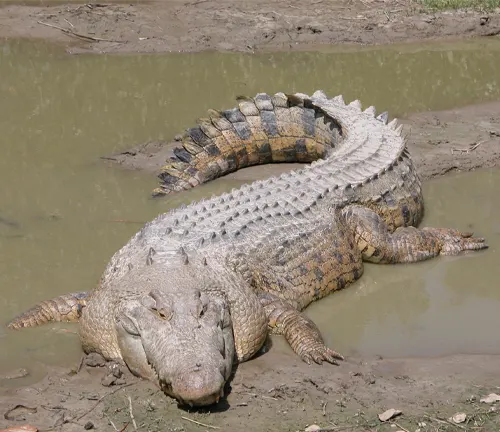
Despite their name, saltwater crocodiles are equally at home in freshwater habitats, including rivers, estuaries, and mangrove swamps, where they reign supreme as top predators. Their diet is diverse, ranging from fish and birds to mammals and even other reptiles, and they are known for their stealthy hunting techniques, often lying in wait before launching swift and deadly attacks on unsuspecting prey. Saltwater crocodiles also play a crucial role in the ecosystems they inhabit, regulating prey populations and maintaining ecological balance. However, their survival is increasingly threatened by habitat loss, pollution, and human activities, underscoring the importance of conservation efforts to ensure their continued existence in the wild.
| Specifications | Details |
|---|---|
| Scientific Name | Crocodylus porosus |
| Common Names | Saltwater crocodile, saltie, estuarine croc |
| Size | Males: Up to 6-7 meters (20-23 feet) |
| Females: 3-4 meters (10-13 feet) | |
| Weight | Males: Over 1000 kilograms (2200 pounds) |
| Females: Varies, generally smaller than males | |
| Habitat | Coastal regions, rivers, estuaries, mangroves |
| Distribution | Southeast Asia, Northern Australia, Eastern India |
| Diet | Fish, birds, mammals, other reptiles |
| Hunting Behavior | Ambush predators, stealthy attacks |
| Reproduction | Mating in water, female lays eggs in sandy nests |
| Incubation period: 80-90 days | |
| Lifespan | Over 70 years in the wild |
| Conservation Status | Least Concern (IUCN Red List) |
| Threats | Habitat loss, pollution, illegal hunting |
| Conservation Efforts | Habitat protection, captive breeding programs |
| Interactions with Humans | Rare but can be dangerous in overlapping habitats |
| Cultural Significance | Revered in indigenous cultures, folklore |
| Research | Studies on behavior, ecology, conservation |
The Apex Predator of the Seas
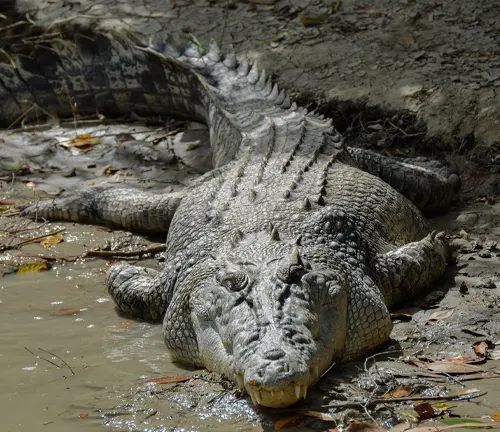
Saltwater crocodiles, also known as “salties” or “salties,” are formidable reptiles inhabiting the coastal regions of Southeast Asia, Northern Australia, and the Eastern coast of India. Renowned for their size, strength, and predatory prowess, these creatures hold a significant place in the ecosystems they inhabit.
Physical Description
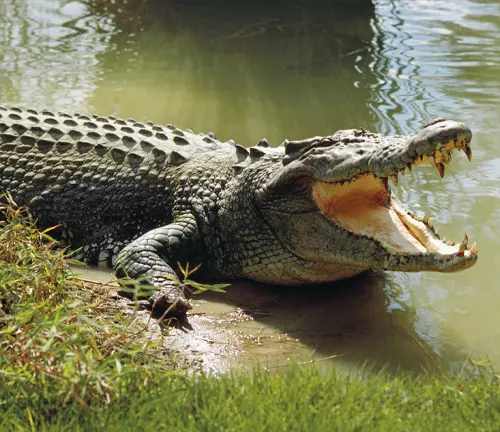
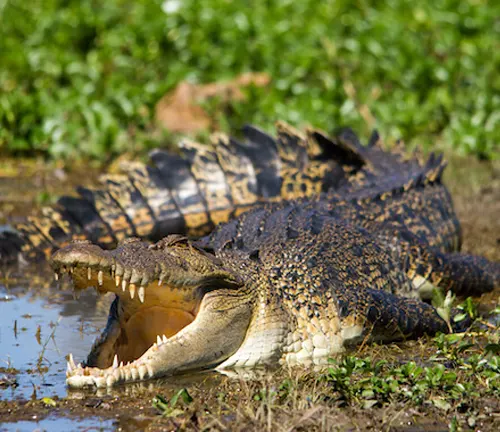
Saltwater crocodiles are the largest living reptiles, with adult males typically reaching lengths of 6 to 7 meters (20 to 23 feet), although some individuals may exceed these dimensions. Females are generally smaller, with lengths ranging from 3 to 4 meters (10 to 13 feet).
Their bodies are covered in tough, armored scales that provide protection against potential threats and aid in their navigation through various aquatic environments. These scales are typically gray or brown in color, allowing them to blend in with their surroundings.
One of the most distinctive features of saltwater crocodiles is their powerful jaws, which are lined with rows of sharp teeth. These teeth are perfectly adapted for catching and tearing prey, and are replaced continuously throughout the crocodile’s life.
Saltwater crocodiles have a streamlined body shape that enables efficient movement through the water. They also possess strong limbs with clawed feet, which aid in propulsion while swimming and provide traction on land.
Habitat and Distribution

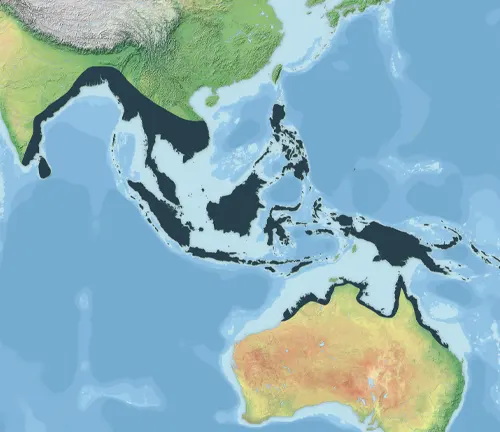
These formidable reptiles inhabit the coastal regions of Southeast Asia, including countries such as Indonesia, Malaysia, and Thailand. They are also prevalent along the northern coastlines of Australia, particularly in the Northern Territory, Queensland, and Western Australia. Additionally, saltwater crocodiles are found along the eastern coast of India and in parts of Bangladesh and Myanmar.
Their habitat preferences encompass a wide range of aquatic environments, including estuaries, mangrove swamps, rivers, lakes, and coastal lagoons. Saltwater crocodiles are particularly abundant in brackish water habitats where freshwater from rivers meets seawater, such as mangrove forests and tidal creeks. These environments provide ample food sources, shelter, and breeding grounds for saltwater crocodiles, making them well-suited to thrive in these areas.
Behavior and Diet
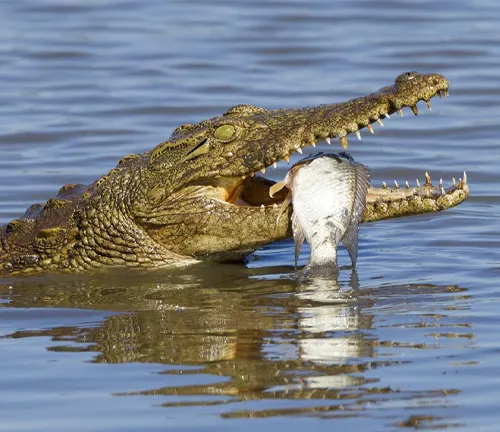
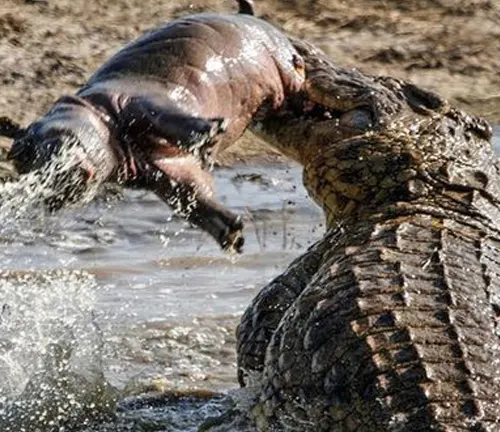
Saltwater crocodiles are apex predators known for their opportunistic hunting behavior and diverse diet. Their hunting strategies vary depending on the availability of prey and environmental conditions.
These formidable reptiles are primarily ambush predators, utilizing stealth and patience to stalk and ambush unsuspecting prey. They often lie in wait near the water’s edge, concealed by vegetation or submerged in the water, before launching swift and powerful attacks on passing prey.
Saltwater crocodiles have a diverse diet that includes a wide range of animals found in their habitats. They are known to feed on fish, birds, mammals, and other reptiles, with larger individuals capable of tackling larger prey such as water buffalo, deer, and even sharks. They are also scavengers and will opportunistically feed on carrion and discarded remains.
Their hunting techniques vary depending on the size and type of prey. For smaller prey such as fish and birds, saltwater crocodiles may employ rapid lunges or short bursts of speed to catch their prey. They use their powerful jaws and sharp teeth to seize and subdue their victims before dragging them underwater to drown.
When hunting larger prey, saltwater crocodiles may employ different tactics, such as stalking and ambushing from concealed positions or launching surprise attacks from underwater. They are capable of overpowering and dragging prey much larger than themselves into the water, where they can drown them before consuming them.
Reproduction
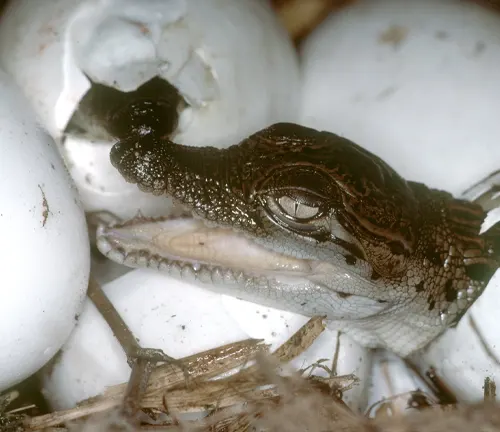
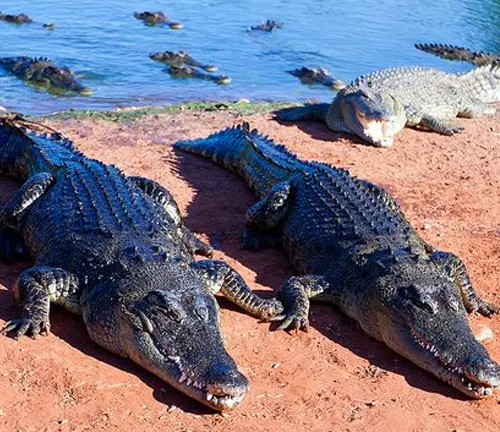
Reproduction in saltwater crocodiles is a fascinating and critical aspect of their life cycle, ensuring the continuation of their species. Mating typically occurs during the wet season, which varies depending on the region. Male saltwater crocodiles engage in elaborate courtship displays to attract females, involving vocalizations, posturing, and physical interactions.
Once a female has chosen a mate, mating takes place in the water, where the male mounts the female and copulation occurs. This process can be quite violent, with the male exerting dominance over the female during mating.
After mating, the female saltwater crocodile will seek out a suitable nesting site to lay her eggs. These nesting sites are often located along riverbanks, in sandy areas, or within mangrove swamps. The female constructs a nest mound using vegetation and soil, where she lays her eggs in a clutch. The number of eggs can vary widely, ranging from around 40 to over 100 eggs per clutch, depending on factors such as the size and age of the female.
Once the eggs are laid, the female covers them with additional vegetation and soil to protect them from predators and regulate their temperature. The incubation period lasts approximately 80 to 90 days, during which the female guards the nest and regulates the temperature by adjusting the depth of the nest and adding or removing vegetation.
Upon hatching, the baby saltwater crocodiles, known as hatchlings, emerge from the eggs and begin their journey to the water. This journey is fraught with danger, as hatchlings are vulnerable to predation from a variety of predators, including birds, mammals, and other reptiles. Only a small percentage of hatchlings survive to adulthood, with survival largely dependent on factors such as predation, habitat quality, and environmental conditions.
Conservation Status


The conservation status of saltwater crocodiles varies across their range, but they are generally classified as a species of least concern on the IUCN Red List. However, this status can be misleading, as regional populations may face localized threats and conservation challenges.
One of the primary threats to saltwater crocodiles is habitat loss and degradation, primarily due to human activities such as urbanization, agriculture, and infrastructure development. Loss of mangrove habitats, in particular, poses a significant threat to saltwater crocodiles, as these areas serve as critical breeding and nesting grounds.
Pollution is another major concern for saltwater crocodiles, with industrial pollution, agricultural runoff, and marine debris contaminating their habitats and food sources. Pollution can have detrimental effects on crocodile health, reproductive success, and overall population viability.
Illegal hunting and poaching also pose significant threats to saltwater crocodiles, driven by demand for crocodile products such as skins, meat, and body parts. Despite legal protections in many countries, poaching continues to occur, particularly in areas with weak enforcement and governance.
Additionally, conflicts with humans, including attacks on humans and livestock, can lead to retaliatory killings and further exacerbate conservation concerns. Encroachment into crocodile habitats, habitat destruction, and improper waste disposal can increase the likelihood of conflicts and negative interactions between humans and crocodiles.
Despite these threats, saltwater crocodiles benefit from conservation efforts aimed at protecting their habitats, reducing human-crocodile conflicts, and implementing sustainable management practices. Conservation initiatives include habitat restoration, captive breeding programs, community education, and legislation to regulate hunting and trade in crocodile products.
Interaction with Humans
The interaction between saltwater crocodiles and humans can be complex and sometimes fraught with danger, particularly in areas where human activities overlap with crocodile habitats.
Saltwater crocodiles are apex predators and are known to be potentially dangerous to humans, although attacks are relatively rare. However, when encounters do occur, they can result in serious injury or even fatalities. These attacks often occur when humans enter crocodile habitats, such as swimming or wading in rivers, estuaries, or coastal areas.
Conflicts between saltwater crocodiles and humans can arise for various reasons, including competition for resources, encroachment into crocodile habitats, and changes in crocodile behavior due to habitat alteration or disturbance. In regions where crocodile populations have rebounded due to conservation efforts, human-crocodile conflicts may increase as crocodiles reclaim territory and establish themselves in areas frequented by humans.
Management strategies to mitigate conflicts and minimize the risk of attacks include public education and awareness campaigns, warning signs in high-risk areas, and regulations to restrict human activities in crocodile habitats. Captive breeding and relocation programs may also be implemented to remove problem crocodiles from areas of high human activity.
Cultural Significance
Saltwater crocodiles hold significant cultural and spiritual importance in many indigenous communities across their range. Revered as sacred animals, they feature prominently in traditional folklore, mythology, and spiritual beliefs.
In various cultures, saltwater crocodiles are seen as symbols of strength, resilience, and power. They are often depicted in art, stories, and rituals as powerful beings with supernatural qualities. In some traditions, saltwater crocodiles are believed to possess healing powers and are invoked for protection against harm.
The relationship between humans and saltwater crocodiles is often characterized by respect and reverence, with communities recognizing the crocodile’s role as an apex predator and guardian of the natural world. Rituals and ceremonies are performed to honor and appease crocodiles, ensuring harmony between humans and nature.
Saltwater crocodiles also play a practical role in indigenous cultures, providing sustenance, tools, and materials for clothing and shelter. In some communities, crocodile hunting and harvesting are integral to traditional practices and livelihoods, with strict rituals and taboos governing the use of crocodile resources.
Despite the modernization and globalization of indigenous cultures, the cultural significance of saltwater crocodiles remains strong, with efforts to preserve and celebrate traditional beliefs and practices. Conservation initiatives often involve collaboration with indigenous communities, recognizing their role as stewards of the land and guardians of cultural heritage.
Different Species
Crocodylus porosus
(Saltwater Crocodile)
This is the largest species of crocodile, found in the coastal regions of Southeast Asia, Northern Australia, and parts of the Eastern coast of India. It’s known for its formidable size, strength, and predatory behavior.
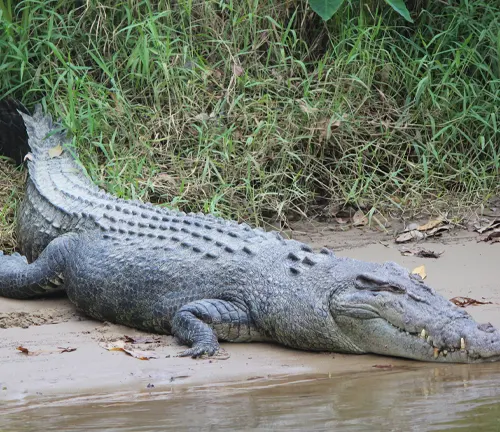

Crocodylus novaeguineae
(New Guinea Crocodile)
Found primarily in New Guinea and nearby islands, this species closely resembles the saltwater crocodile but is generally smaller in size. It inhabits freshwater habitats such as rivers and lakes.
Crocodylus mindorensis
(Philippine Crocodile)
Endemic to the Philippines, this critically endangered species is much smaller than the saltwater crocodile. It primarily inhabits freshwater habitats such as rivers, streams, and marshes.
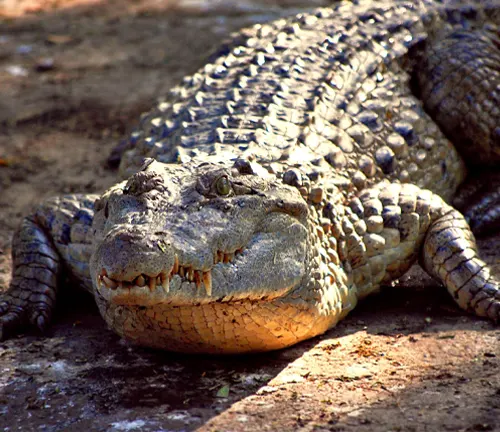

Crocodylus johnstoni
(Freshwater Crocodile)
Although not a true saltwater crocodile, this species is sometimes referred to as the “freshwater saltie.” It is found in freshwater habitats throughout Northern Australia and is smaller and less aggressive than its saltwater counterpart.
Frequently Asked Question (FAQs)
- How large can saltwater crocodiles grow?
Saltwater crocodiles are the largest living reptiles, with males reaching lengths of up to 6 to 7 meters (20 to 23 feet) and weighing over 1000 kilograms (2200 pounds). - What do saltwater crocodiles eat?
Saltwater crocodiles are opportunistic predators, feeding on a wide range of prey including fish, birds, mammals, and other reptiles. - Where are saltwater crocodiles found?
Saltwater crocodiles are primarily found in coastal regions of Southeast Asia, Northern Australia, and parts of the Eastern coast of India. - How do saltwater crocodiles reproduce?
Mating typically occurs in the water, and females lay their eggs in sandy nests along riverbanks or in estuarine environments. The incubation period is approximately 80 to 90 days. - Do saltwater crocodiles interact with other crocodile species?
While saltwater crocodiles primarily inhabit saltwater environments, they may occasionally interact with other crocodile species, particularly in freshwater habitats where species overlap. - What are the main threats to saltwater crocodiles?
Habitat loss, pollution, illegal hunting, and conflicts with humans are the main threats to saltwater crocodiles. - Are saltwater crocodiles endangered?
Saltwater crocodiles are listed as a species of least concern on the IUCN Red List, but regional populations may face localized threats and conservation challenges. - How do saltwater crocodiles communicate?
Saltwater crocodiles communicate through vocalizations, body language, and chemical signals, particularly during mating and territorial disputes. - How long can saltwater crocodiles hold their breath underwater?
Saltwater crocodiles can hold their breath underwater for extended periods, often exceeding one hour during periods of rest or ambush hunting. - What adaptations do saltwater crocodiles have for their aquatic lifestyle?
Saltwater crocodiles have specialized adaptations for life in water, including streamlined bodies, webbed feet, and valves in their nostrils that allow them to remain submerged while breathing. - Do saltwater crocodiles play a role in local ecosystems?
Yes, saltwater crocodiles play a crucial role in regulating prey populations and maintaining ecological balance in their habitats. - Can saltwater crocodiles survive in freshwater habitats?
Yes, saltwater crocodiles are known to inhabit freshwater habitats such as rivers, lakes, and swamps, although they prefer brackish or saltwater environments.



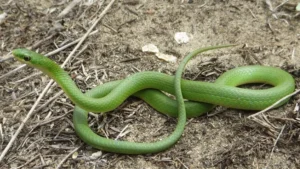




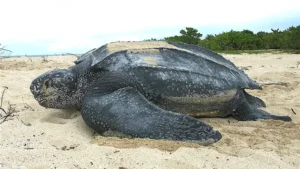
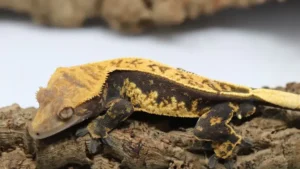


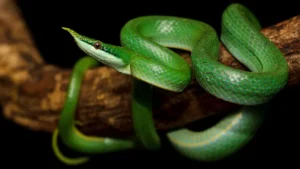
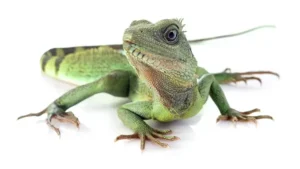
Leave your comment